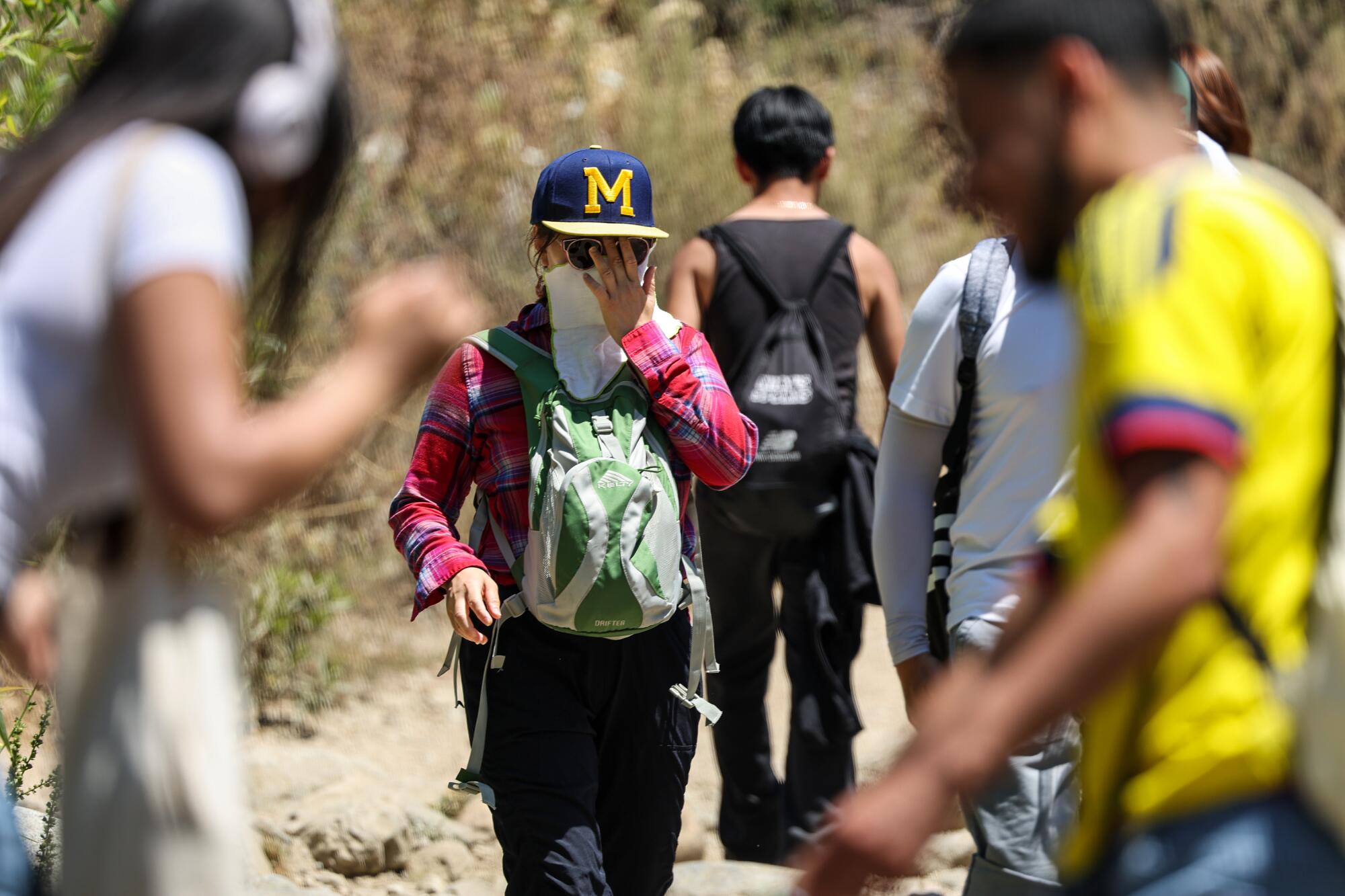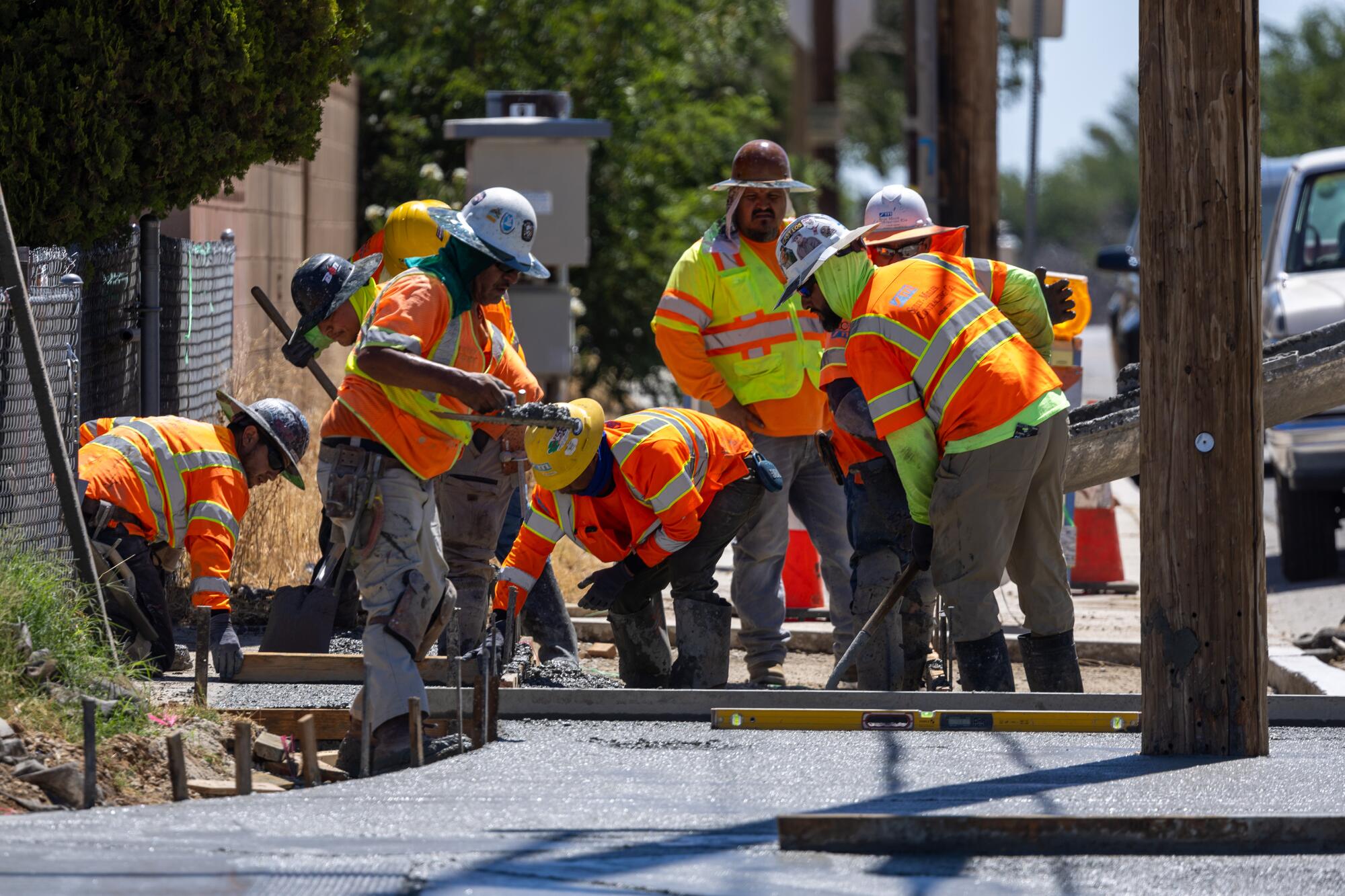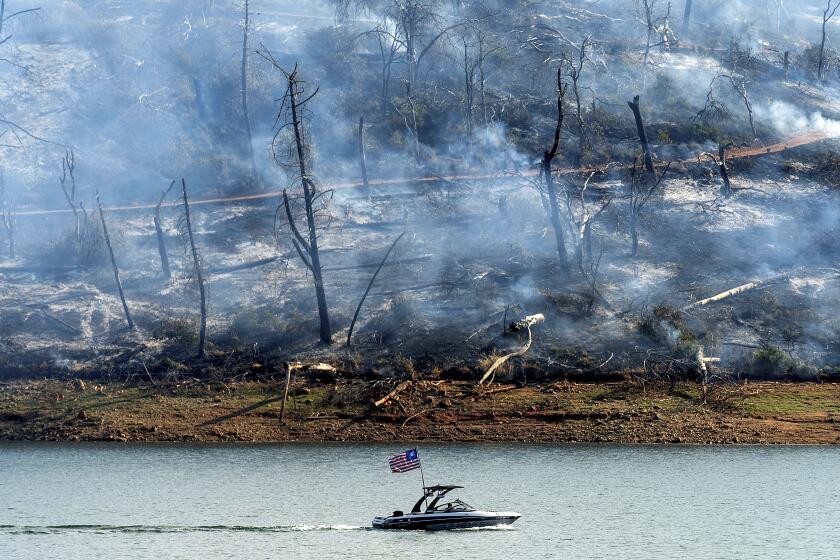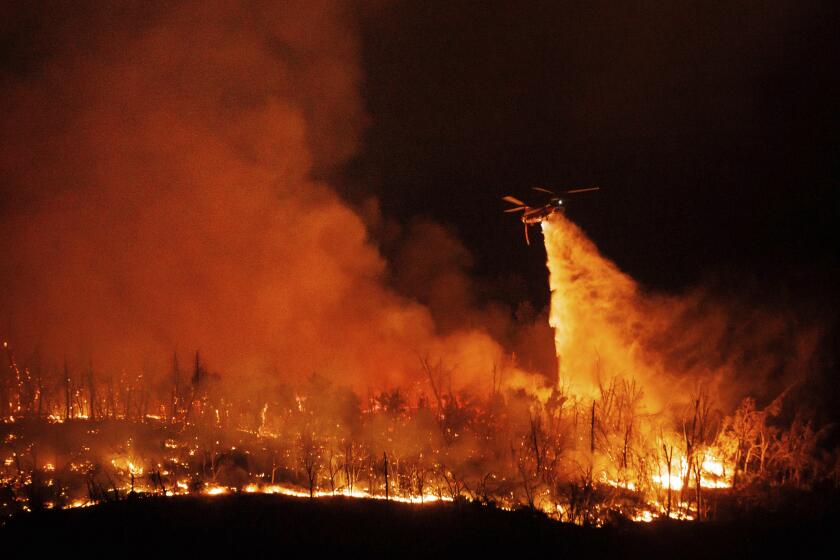
- Share via
Blazing heat and increased wildfire risk will grip Southern California through the Fourth of July weekend and into early next week, with temperatures peaking above 115 degrees in desert areas Friday and forecasters issuing heat warnings and advisories throughout the region.
Extreme temperatures and gusty winds will also combine with dry conditions to create a high risk of new wildfires throughout the state as the Thompson fire continues to burn across more than 3,500 acres north of Sacramento.
“Tomorrow is going to be an absolute scorcher,” Joe Sirard, a meteorologist at the National Weather Service office in Oxnard, said Thursday morning. “It’s not your typical heat wave. This is a dangerous heat wave, this is a high-end heat wave. Very dangerous.”
The Thompson fire has burned 3,500 acres and resulted in evacuation orders for more than 28,000 people in Butte County. Oroville residents are reminded of the deadly Camp fire, which destroyed the nearby town of Paradise.
Heat warnings were in place Thursday for much of L.A. County’s valleys and deserts as well as the Santa Monica Mountains.

The predicted highs for the Fourthhovered around 106 degrees in the valleys, 103 in the lower mountains and 111 in desert areas, according to the National Weather Service. On Friday, temperatures are expected to soar as high as 110 to 112 degrees in the county’s valleys and mountains, and between 112 and 118 in the desert. The only parts of the county that aren’t experiencing extreme heat conditions, Sirard said, are coastal communities.
The temperature hit 110 at the Palmdale Airport on Thursday, matching a record high set in 1973, according to the National Weather Service. The agency said temperatures were forecast to rise by 4-6 degrees Friday in the Antelope Valley.
Officials advised Southern California residents to take precautions against exposure to high temperatures, which can elevate the risk of heatstroke and heat exhaustion. The National Weather Service called on people to stay in air-conditioned spaces during the day and early evening, stay hydrated, check on neighbors and the elderly and avoid strenuous outdoor activities.
“It’s just too hot,” Sirard said. “Just use common sense. It’s a dangerous heat wave and that’s why we have the heat warnings.”
Jacque McDonald, 39, drove with her husband and their two young children from their home in Tarzana to Hermosa Beach on Thursday morning to beat the high heat in the San Fernando Valley.
“We came here just because we know it’s going to be hot. I’m not about it,” McDonald said as crowds of people in bathing suits and sunglasses strolled by on the Strand and gray clouds helped keep the temperature down. “We have a pool at our complex, but we figured it would be packed. So we planned to come down here to the beach.”

Just before noon, dozens of visitors shuffled down the dirt path at Eaton Canyon Natural Area, a popular L.A. County park in Altadena with a stream and a waterfall.
At the trail’s first water crossing, Mercedes Monje, 29, of Los Angeles sat along the bank with her partner and 2-year-old son splashing in the water while the rest of her family sat nearby.
Monje said her family usually hits a beach or river on the Fourth of July.
They originally planned Thursday to go to the East Fork of the San Gabriel River. But when they arrived about 8 a.m., they were told by authorities that it was full.
“We’re a little bit disappointed that we couldn’t be where we actually had planned to go, but we’re trying to make the best out of it,” Monje said.
Meanwhile, the risk of wildfires is high in inland areas, as is the chance that even small fires could quickly become larger conflagrations, given the extreme conditions.
“We’re expecting high heat today, which increases the chances for fire growth,” said David Acuna, a Cal Fire battalion chief. Fire departments across California urged people to resist the temptation to celebrate the Fourth of July by shooting off fireworks that could spark new blazes.
In Butte County, the Thompson fire remained just 7% contained as of Thursday morning, Acuna said, though it had remained steady at 3,568 acres overnight. He said 1,962 personnel, 20 helicopters, 214 engines, 46 dozers, 43 water tenders and 37 crews were fighting the fire. At its peak, about 12,000 structures were evacuated, affecting about 28,000 people.
Butte County has been buffeted by disaster after disaster in recent years. But the Camp fire, California’s deadliest wildfire to date, left deep wounds.
“The firefighters on the line will continue to remain hydrated and ready in the event the fire acreage increases,” Acuna said, adding that though some have been downgraded, “a number of fire evacuations and warnings” remained in place near the blaze Thursday.
In Simi Valley, the Sharp fire was holding at 133 acres, and the containment was updated from 15% to 60% Thursday morning, according to Ventura County Fire Department spokesman Andy VanSciver.

No structures have been damaged by the fire, which at one point prompted an evacuation order for 60 nearby homes and an evacuation warning for an additional 340. The orders and warnings were lifted Wednesday evening, VanSciver said.
“The containment lines have been holding and they’re being reinforced,” he said, adding that he didn’t anticipate wind conditions to cause the blaze to spread. “We have enough resources on hand to handle it.”
More to Read
Sign up for Essential California
The most important California stories and recommendations in your inbox every morning.
You may occasionally receive promotional content from the Los Angeles Times.














